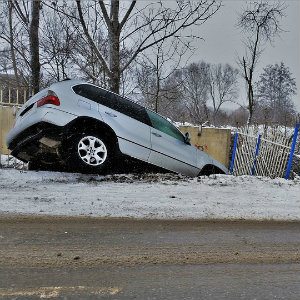Car accidents happen every day in New York and it’s not uncommon for emergency responders to arrive and find a gruesome scene awaits. Twisted metal, cars that don’t even look like cars anymore, and victims with serious injuries can leave even the most experienced with nightmares. But the worst accidents involve a child being hurt or killed.
If your child was injured in a similar incident, contact our child injury lawyers today.
No one can anticipate when an issue might arise in their car. However, there are certain safety steps that every driver should take when they realize that an issue may place them in harm’s way or disrupt the flow of traffic. That’s exactly what one man did when the hood of his Pontiac Vibe unexpectedly popped up and obstructed his view of the road. In order to protect himself, his wife, and their two sons, he immediately checked the road behind him, as well as the two lanes on either side. He saw no other cars approaching and so he slowed down and put on his emergency blinkers.
Emergency blinkers are used to indicate that a car is experiencing issues and will need to slow down and potentially pull over. Other drivers should see this and respond accordingly, allowing the car in distress to make the changes necessary to keep everyone on the road safe. But on this day, the only other vehicle on the road was being controlled by a man who was under the influence of narcotics.
Before the family could even maneuver their vehicle to the side of the road, the other driver, in a Ford F250, slammed into the back of their Pontiac, sending them spinning out of control.
The damage done to the victims was catastrophic. The father of the vehicle sustained spinal fractures and head trauma which left him with chronic headaches, memory loss, and aphasia. The mother, who was in the passenger seat, also sustained head trauma and spinal fractures. She was also found to have multiple rib fractures. Their younger child broke his femur which left both of his legs in a cast for almost two months, as well as head trauma that caused him to have seizures. Their older child, sadly, sustained the worst of the injuries, including blunt force trauma that caused him to bleed internally. Despite being quickly airlifted to the hospital and undergoing emergency surgery, he succumbed to his injuries an hour and a half after the accident.
Not surprisingly, all three of the surviving family members have also suffered from severe depression - not only because their family member died but because they went through the trauma of seeing him sustain his fatal injuries.
The driver who hit them was working for a masonry company at the time of the accident. When police performed a field sobriety test, he failed three out of five tests. He also refused to take a drug test. After being questioned, he did admit that he was on a drug called Suboxone, which is used to treat people who are addicted to narcotics. However, he claimed that he had taken the drug more than 24 hours prior to the accident and that he had simply been reaching for an object which caused him to take his eyes off of the road.
While there is nothing in this world that can replace a child who was taken far too soon, car accident victims do have legal options. In this case, the family pursued a lawsuit against the driver of 
Their legal team was able to preserve evidence from the truck, a “black box” which records data while a vehicle is in operation, much like the recorder found on airplanes. This information showed that the truck had been going nearly 20 miles over the posted speed limit of 55mph for at least 20 seconds prior to the impact and that the brakes had only been applied about 0.06 seconds before he hit the family.
During the trial, a toxicologist testified to the fact that the drug he had admitted to taking contained buprenorphine, which has a half-life of anywhere between 24 - 60 hours depending on the person who took it. This means that there was no doubt that he was still intoxicated at the time of the accident.
After a careful review of the facts, the jury determined that both of the defendants were at fault and awarded the family $32 million for their losses.
No, no two cases are the same and so, therefore, the awards for each case are different. When determining how much to award a plaintiff in damages, the court must take into consideration what they actually lost and what they may be expected to lose in the future due to the need for ongoing medical care.
The actual trial can take anywhere from days to weeks depending on the evidence that is presented. However, most cases resolve before ever going to trial through careful negotiation and settlement.
See our next article: Child Injuries Caused By Defective Products